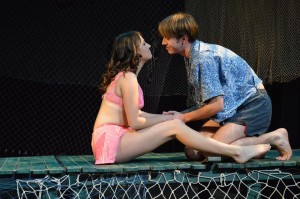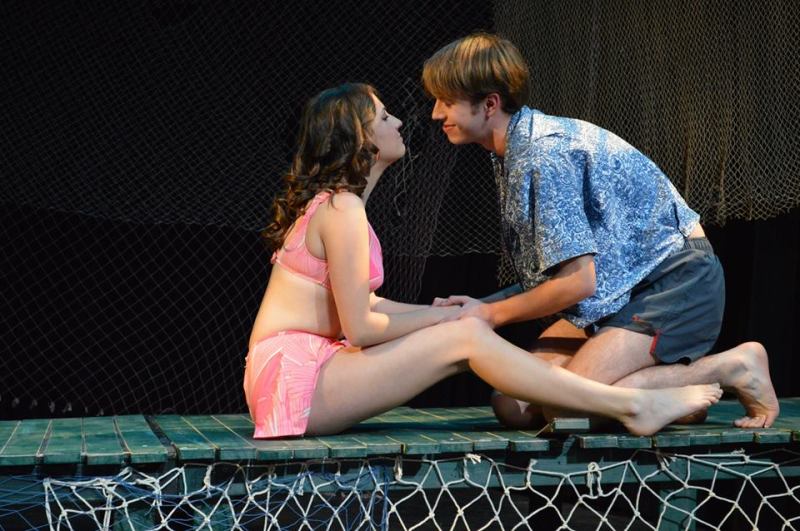
Stanford Theater Laboratory’s production of Eurydice, a one-act play by the contemporary playwright Sarah Ruhl, asks us to consider weighty themes of death, remembrance, and identity through one woman’s choice between a husband and a father. Performed three times last week under the direction of Allison Gold ’15, this unusual and frustrating play draws the audience into an off-kilter world where the mundane becomes magical.
Ruhl’s Eurydice builds on the Greek myth of Eurydice and Orpheus, adding new characters to better flesh out Eurydice’s character and to more effectively explore types of love and remembrance. Setting the action partially in an afterlife that mirrors our own world but diverges sharply in unsettling ways, the playwright attempts to draw out ideas about identity through different refractions. As in the original, Eurydice dies after her wedding to Orpheus, a musician, and he subsequently goes down to the afterlife to recover her.
He is told that Eurydice will follow him out of the underworld if he does not look back. He can’t help it, however, and Eurydice fades back into the land of the dead. Ruhl’s play adds a new piece in the form of Eurydice’s father, who helps her to recover her memory in the land of the dead after she swims through the river of forgetfulness. When Orpheus comes to bring her back, Eurydice now must choose between the father she has reconnected with through childhood memories and the husband who represents growing up.
Much of the theatergoer’s experience of this production will depend on his or her feelings about Ruhl’s works, which can be polarizing. Eurydice resembles Ruhl’s play Dead Man’s Cellphone (put on at Stanford last spring) in that Ruhl attempts to bring out the whimsy in the mundane through tone, often, it seems, at the expense of emotional depth. She combines modern phrasing with poetry and emphasizes the sound of words as much as their meaning.
This can be alternatively transcendental and grating. Ruhl’s dialogue, for instance, often works better than her monologues, since the latter are more susceptible to flights of fancy that lose touch with the emotional center of the play, the relationships between the characters. She also often handles these relationships simplistically, developing her themes with bits of pseudo-philosophy like “Weddings are for fathers and daughters.” This, for me, became tiresome. Nevertheless, the actors seemed to relish Ruhl’s often nonsensical lines. Lucie Fleming ’17 is a standout as Eurydice, offering energy and intent in a role that encompasses both childlike innocence and romantic passion.
Ruhl’s script leaves much of the work of embodying the world to the designers, who do a beautiful job situating the audience in her reality. The set, designed by Keenan Molner ’15 (also the lighting designer) was vibrant and otherworldly, and I particularly enjoyed the slow intimacy of the creation of a room from string. Costume designer Juliet Charnas ’15 and sound designer Brigitte Wittmer ’16 also excelled. Overall, Stanford Theater Laboratory’s production of Eurydice – given the challenges of such a difficult and uneven play – is a thorough and thoughtful one.
